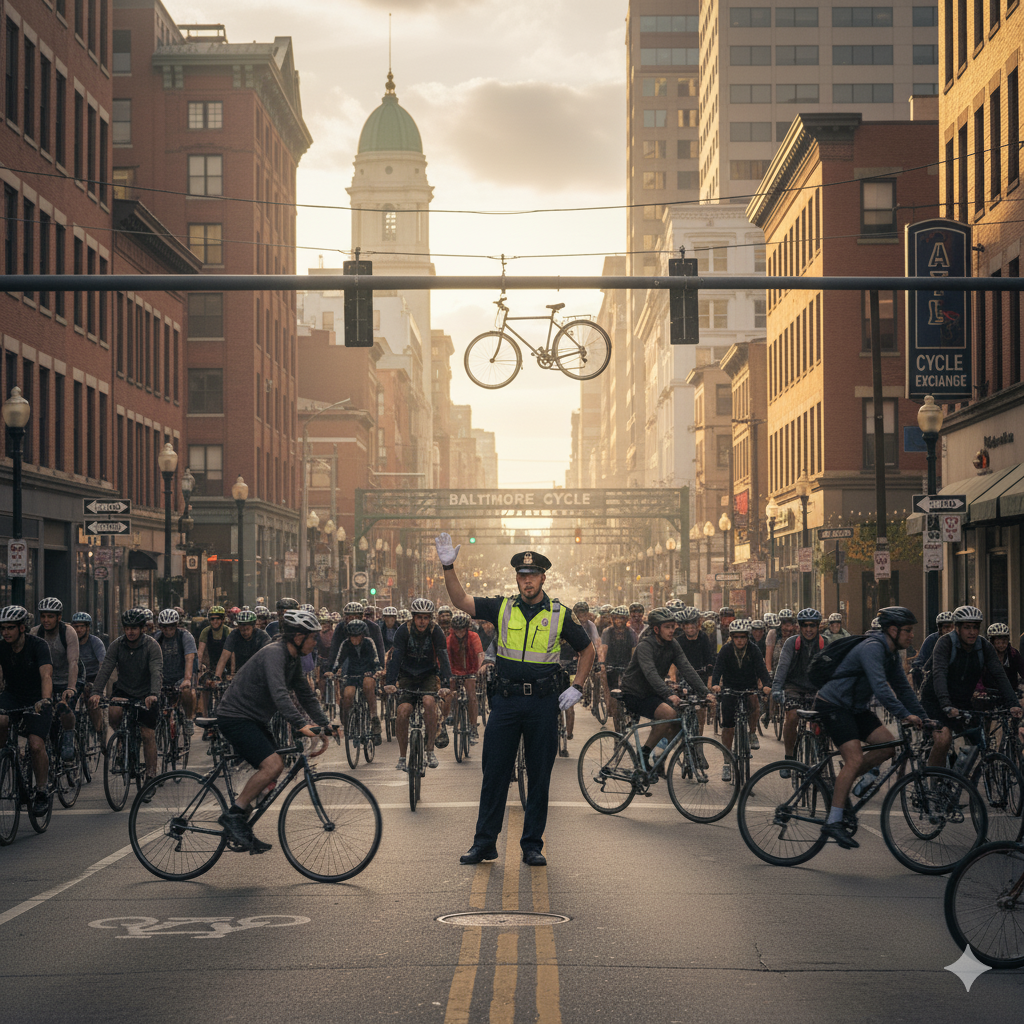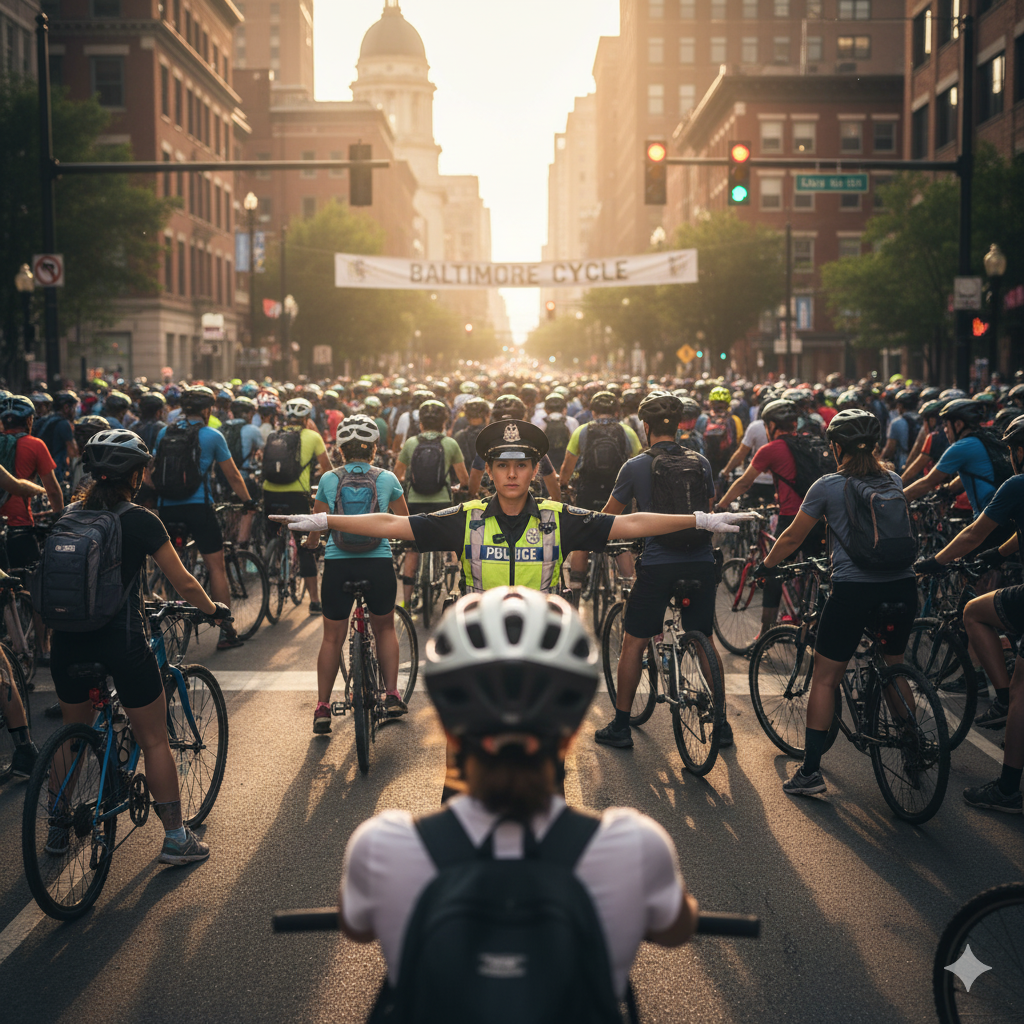I Was Hit While On A Bicycle -Do I Have A Personal Injury Case?

Of course the rules of the road, including the duty to use due care, apply to the operators of bicycles. Attorney Eric T. Kirk will tell you.
Baltimore Injury Law Tip #48: It has come as a surprise to some of my clients that a bicyclist has all the rights of a motorist.
Indeed, the rules of the road for motorists and bicyclists overlap heavily — both must stop at signals, obey right-of-way laws, and ride/drive sober. But key differences exist:

- Bicyclists are generally treated as vehicles with exceptions that account for their vulnerability.
- Motorists may well face enhanced duties when overtaking, turning, and operating near bike lanes.
Ultimately, the system of compensation reflects a balancing act, some say, by: holding bicyclists accountable to traffic laws while recognizing that motorists should bear the greater responsibility to prevent collisions.
How to Obtain Compensation After a Baltimore Bike Crase
- Know the Lane Position Rules for Motorists
Motorists generally must keep to their lane and cannot drive on the shoulder unless passing a stopped vehicle, making a lawful turn, or required by traffic control, or allowed by law, and must obey lane markings strictly (no crossing double yellow except when permitted, such as avoiding a hazard or passing a slow bicyclist under safe conditions).
- Be Aware of Motorists Obligations Upon Passing Bicyclists:
Maryland law (§ 21-1209, requires drivers to give bicyclists at least a 3-foot clearance when passing, Unless:
(i) The bicycle, EPAMD, or motor scooter rider fails to operate the vehicle in conformance with § 21–1205(a) of this subtitle (“Riding to right side of roadway”) or § 21–1205.1(b) of this subtitle (“Roadway with bike lane or shoulder paved to smooth surface”);
(ii) A passing clearance of less than 3 feet is caused solely by the bicycle, EPAMD, or motor scooter rider failing to maintain a steady course; or
(iii) The highway on which the vehicle is being driven is not wide enough to lawfully pass the bicycle, EPAMD, or motor scooter at a distance of at least 3 feet. - Baltimore City DOT has adopted Vision Zero goals
Baltimore City DOT has adopted Vision Zero goals to eliminate roadway deaths.
The state emphasizes infrastructure such as bike lanes, and separated cycle tracks.
Enforcement campaigns target motorists’ failure to yield, speeding, and distracted driving.
Education efforts stress that while bicyclists must obey traffic laws, motorists have the greater duty of care due to the disproportionate risk they pose.
Contributory Negligence Concepts Apply To Bicycle Accidents In Baltimore
Baltimore is a contributory negligence jurisdicton — if a bicyclist is even 1% at fault, they may be barred from recovery in a civil lawsuit Example: A motorist fails to yield when turning left, but the bicyclist was riding without lights at night. That lack of lighting could bar recovery
Baltimore Injury Lawyer’s Tip 48: Indeed. At least one case has determined that a bicyclist failing to stay to the right, who is injured by a motorist, has no claim based on contributory negligence principles. Longie v. Exline, 659 F.Supp. 177 (D. Md., 1987).
If you’ve been injured, I’d be honored to personally meet with you to go through the specifics of your claim. This initial legal analysis and case opinion is a complimentary service I offer to my prospective clients.
TL;DR Summary
- Maryland law classifies bicycles as vehicles, but grants them special rules and exceptions.
- Motorists must yield to bicyclists in bike lanes, keep a 3-foot buffer when passing, and can be deemed at fault in right-hook / left-cross crashes.
- Bicyclists generally must follow traffic laws like cars, but they may:
- ride two abreast in some cases,
- use the shoulder or rightmost lane if appropriate
- legally use sidewalks where jurisdictions that allow it.
Additional Resources: Baltimore Bicycle Personal Injury Claims
https://pmc.ncbi.nlm.nih.gov/articles/PMC5572144/?utm_source=chatgpt.com
https://transportation.baltimorecity.gov/sites/default/files/Baltimore%20City%20SHSP%20Part%201.pdf



